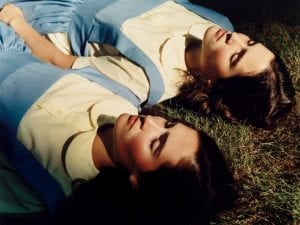Roughly a century after the production of the first animated film, the Smithsonian’s Hirshhorn Museum and Sculpture Garden takes stock of the current state of the art form and considers what it can reveal to us about the information age, in Suspended Animation, a show which brings together six artists who use animation as a tool to challenge conceptions of reality. Ed Atkins, Antoine Catala, Ian Cheng, Josh Kline, Helen Marten and Agnieszka Polska all make use of animation to examine such contemporary themes as the impact of virtual worlds on tangible physical experience and the digitisation of identity.
In science fiction and medicine, the term “suspended animation” refers to the slowing down of vital processes in order to extend life. Applied to contemporary computer animation, the title refers to the virtual replacement of the physical body. An important part of human experience today occurs on screen, and a disembodied consciousness is taking over. This phenomenon has led the artists in this exhibition to redefine the body by reworking the relation between self and technology.
“Artists are addressing themselves to the spaces between ever more sophisticated approximations of the real and reality itself,” said Gianni Jetzer, the Hirshhorn’s curator-at-large. “But the point of the animated image is not simply to mirror reality as faithfully as possible. The animated image has evolved into another kind of reality, to be entered into imaginatively at will. It now competes with reality on equal footing.”
Atkins, for example, works with computer-generated characters and scenes that are built upon self-performance and explore the creation of alternative notions of space and time, while Catala pairs animation with pneumatic sculptures and holograms, creating encounters that drift into the humourous but also investigate the edges of perception. Marten meanwhile creates animated objects and interiors whose artificial surfaces give them an uncanny presence, while voiceovers unrelated to the action onscreen add enigmatic undertones.
Rather than mimicking the real, animation here works to examine the embodiment of reality within a digital world. It provides the means to investigate the relationship between reality and simulation, fact and fiction, human beings and avatars. Such works ultimately ask whether the virtual body marks the end of the real body.
Suspended Animation, until 12 March, Smithsonian Institution Hirshhorn Museum and Sculpture Garden, MRC 350, Washington DC, 20013-7012
Find out more: www.hirshhorn.si.edu.
Follow us on Twitter @AestheticaMag for the latest news in contemporary art and culture.
Credits
1. Ed Atkins. Still from Warm, Warm, Warm Spring Mouths, 2013. Courtesy of the artist; Cabinet, London; Gavin Brown’s enterprise, New York; Isabella Bortolozzi Galerie, Berlin; and Dépendance, Brussels.





